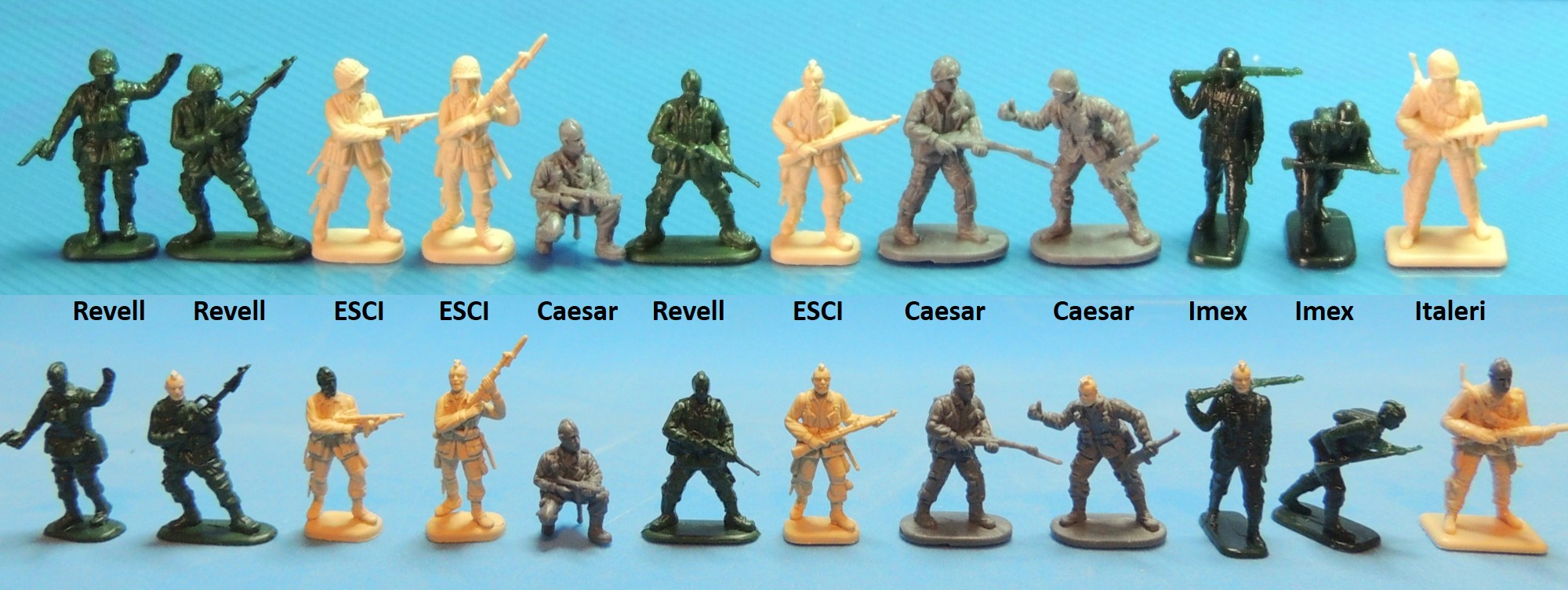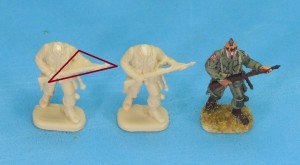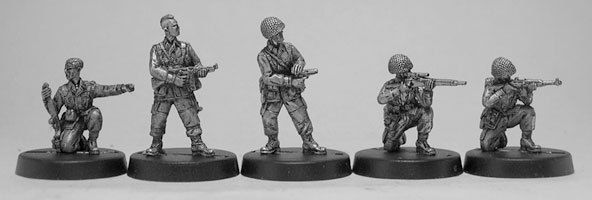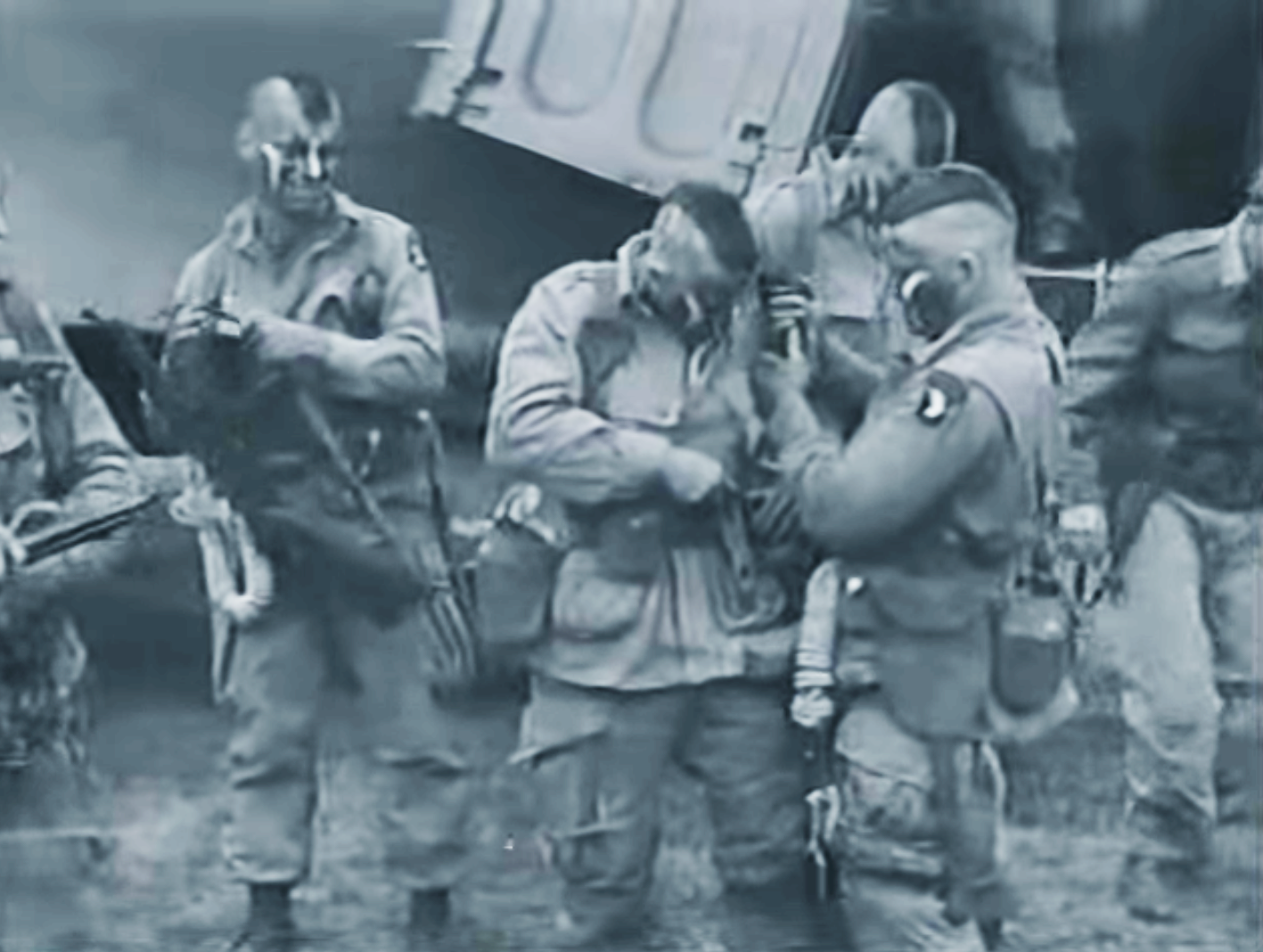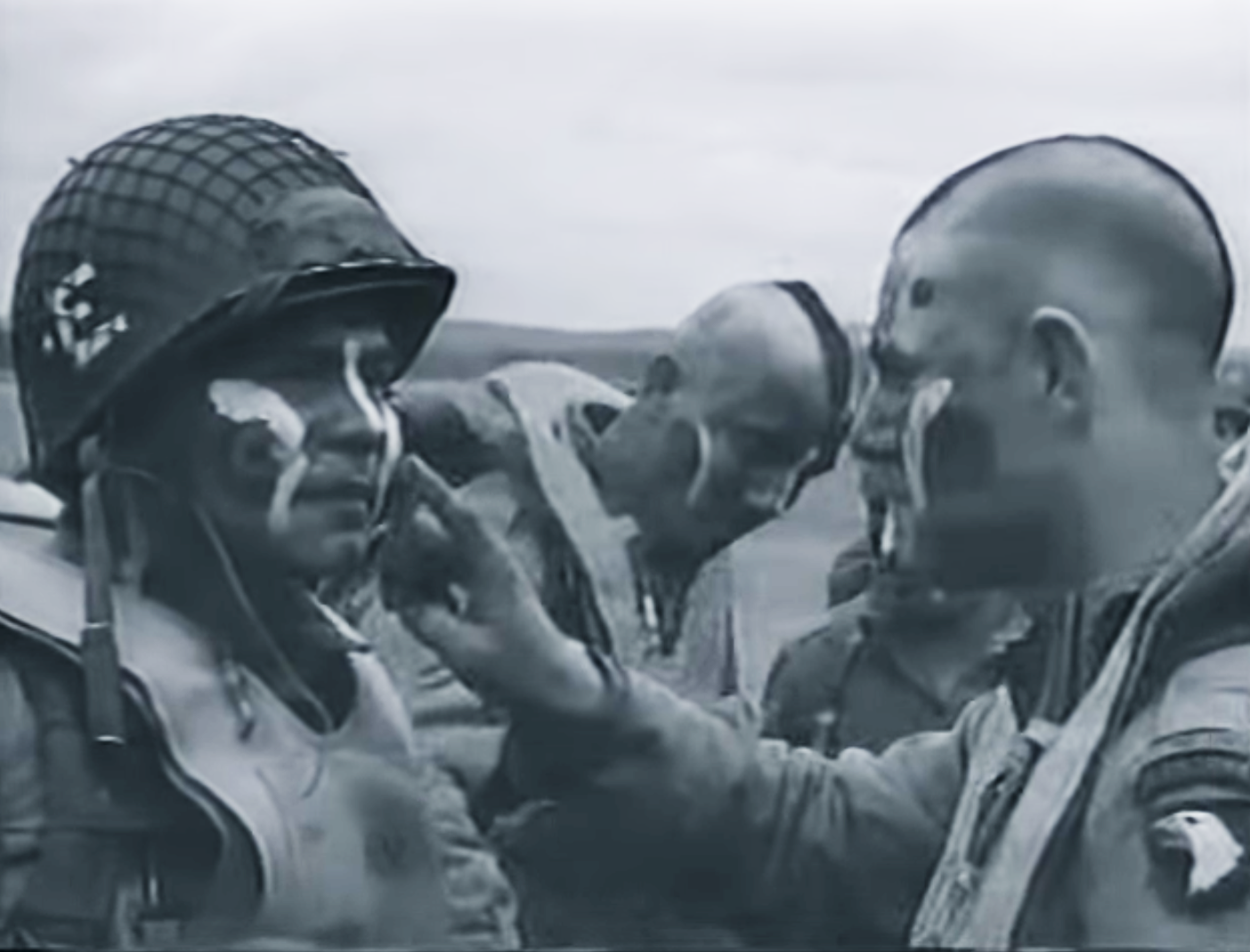This is the fourth of a five-part series on the Filthy Thirteen. For a synopsis of these colorful characters, creating the figures in 1/72 scale, and selecting their weapons, please refer to the three previous posts, The Filthy Thirteen, Part 1, Part 2 and Part 3, respectively.
Although I generally paint my own figures, my skills are mediocre at best, and I was too excited about this particular set to ruin it with my efforts. I freely concede: I’m a dilettante — I dabble in everything and master nothing. Thus, I turned to a genuine hobbyist with real expertise for help. The awesome results of his skill, dedication, and patience follow.
Before we start, let’s put things in perspective. I fully understand that most people reading this post are 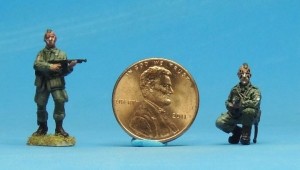 familiar with 1/72 scale and know the height of a typical figure. However, for those casual internet browsers who happen upon this site, the average 1/72 scale figure is approximately 1 inch or 25 mm tall. Borrowing a practice from the terrific WW2 Germans in 1/72 website, the photo at left provides perspective to help us understand the significant painting challenges posed by this scale. I know hobbyists who use a one-bristle paint brush for detail work. In addition, anyone who has painted 1/72 scale figures will understand the severe eye strain and occasional headache that results from concentrating on a figure — there’s a reason 1/72 is known as braille scale. And yet, those of us who engage in this activity know the nirvana with which we’re rewarded.
familiar with 1/72 scale and know the height of a typical figure. However, for those casual internet browsers who happen upon this site, the average 1/72 scale figure is approximately 1 inch or 25 mm tall. Borrowing a practice from the terrific WW2 Germans in 1/72 website, the photo at left provides perspective to help us understand the significant painting challenges posed by this scale. I know hobbyists who use a one-bristle paint brush for detail work. In addition, anyone who has painted 1/72 scale figures will understand the severe eye strain and occasional headache that results from concentrating on a figure — there’s a reason 1/72 is known as braille scale. And yet, those of us who engage in this activity know the nirvana with which we’re rewarded. 
The Painted Figures
The following pictures follow the order established in the Figure Chart of the two previous posts. Unless otherwise specified, comments always refer to the photo below the comments.
BELOW: Here are the first four figures. Note the warpaint on their mugs, bearing in mind that the width of their faces is about 2 mm. Note the patches used to reinforce the elbows and knees on the jackets and trousers, a distinct characteristic of paratrooper uniforms. The Revell BAR gunner (second from left) is wearing the BAR belt with six pockets, each for two 20-round magazines, giving him a total of 240 rounds. Note the magazine pouches on the belt of the ESCI figure with the M1A1 Thompson submachine gun (third from left).
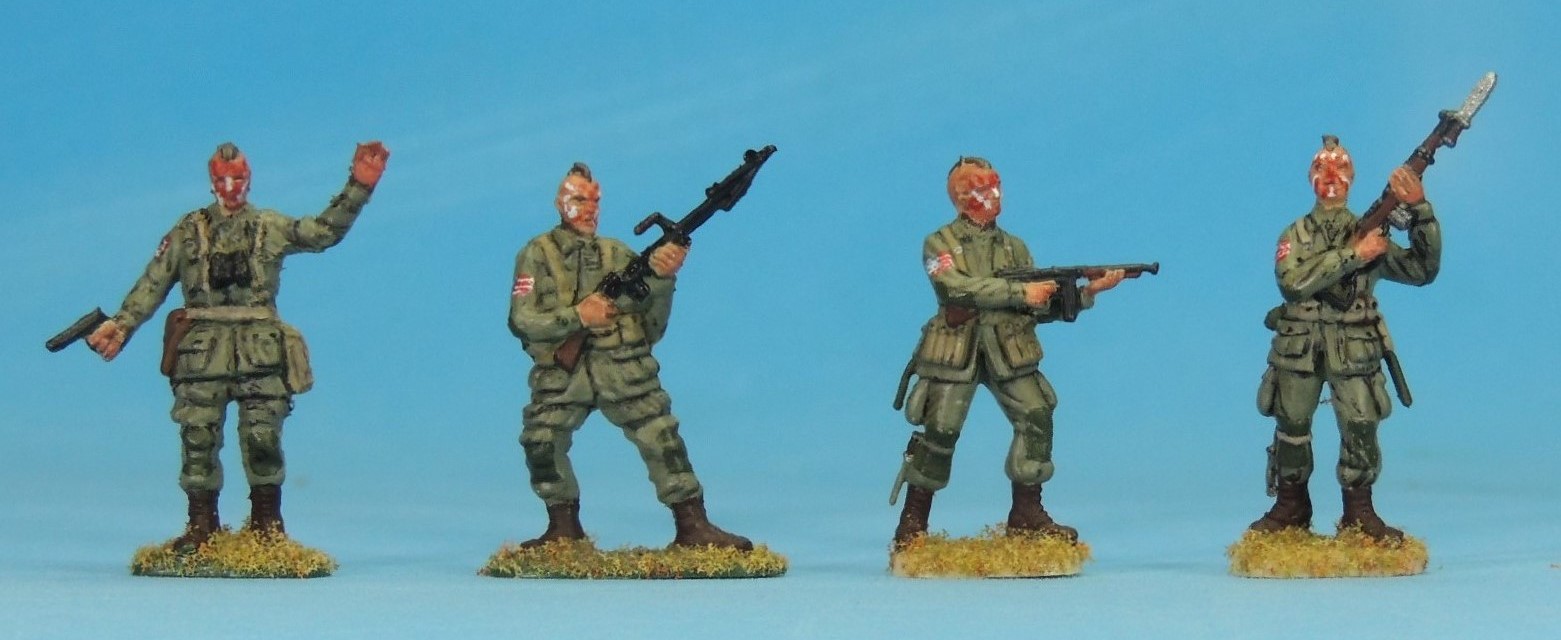
BELOW: Note the hand-painted U.S. flag patches on the right shoulder. Astute observers will immediately notice that the flag is seemingly facing in the wrong direction as the applicable U.S. Army regulation requires that the “star field face forward,” like a flag flying in the breeze as it is carried forward. In other words, the regulation requires the flag to be backwards when on the right shoulder.
However, U.S. paratroopers were allowed to use the regular U.S. flag patch, probably because they were dropped behind enemy lines and needed to be easily identified by advancing U.S. forces. (I found at least a dozen photos of WWII U.S. paratroopers wearing the regular U.S. flag patch on their right shoulders before I was convinced.) 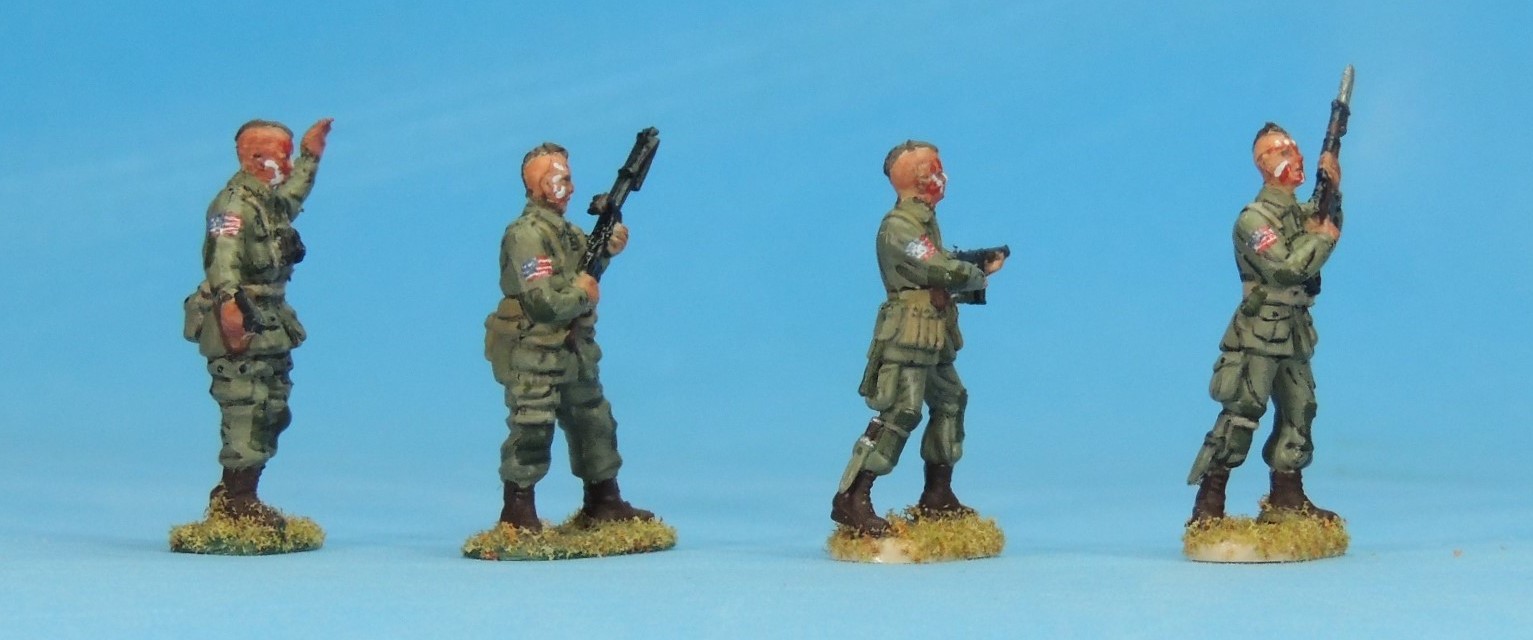 BELOW: Note the famed Screaming Eagle shoulder patches of the 101st Airborne Division on the left shoulder. Only the painter knows how much eye strain these patches are worth. Another U.S. Airborne characteristic is the M3 trench knife and scabbard attached to the lower leg, as can be seen in the picture above on the right leg of the two ESCI figures on the right. A peculiarity of the ESCI set is that 13 of the 14 figures in the set sport the knife in the same fashion — the prone machine gunner being the only exception. The other sets only have two or three figures carrying the trench knife.
BELOW: Note the famed Screaming Eagle shoulder patches of the 101st Airborne Division on the left shoulder. Only the painter knows how much eye strain these patches are worth. Another U.S. Airborne characteristic is the M3 trench knife and scabbard attached to the lower leg, as can be seen in the picture above on the right leg of the two ESCI figures on the right. A peculiarity of the ESCI set is that 13 of the 14 figures in the set sport the knife in the same fashion — the prone machine gunner being the only exception. The other sets only have two or three figures carrying the trench knife.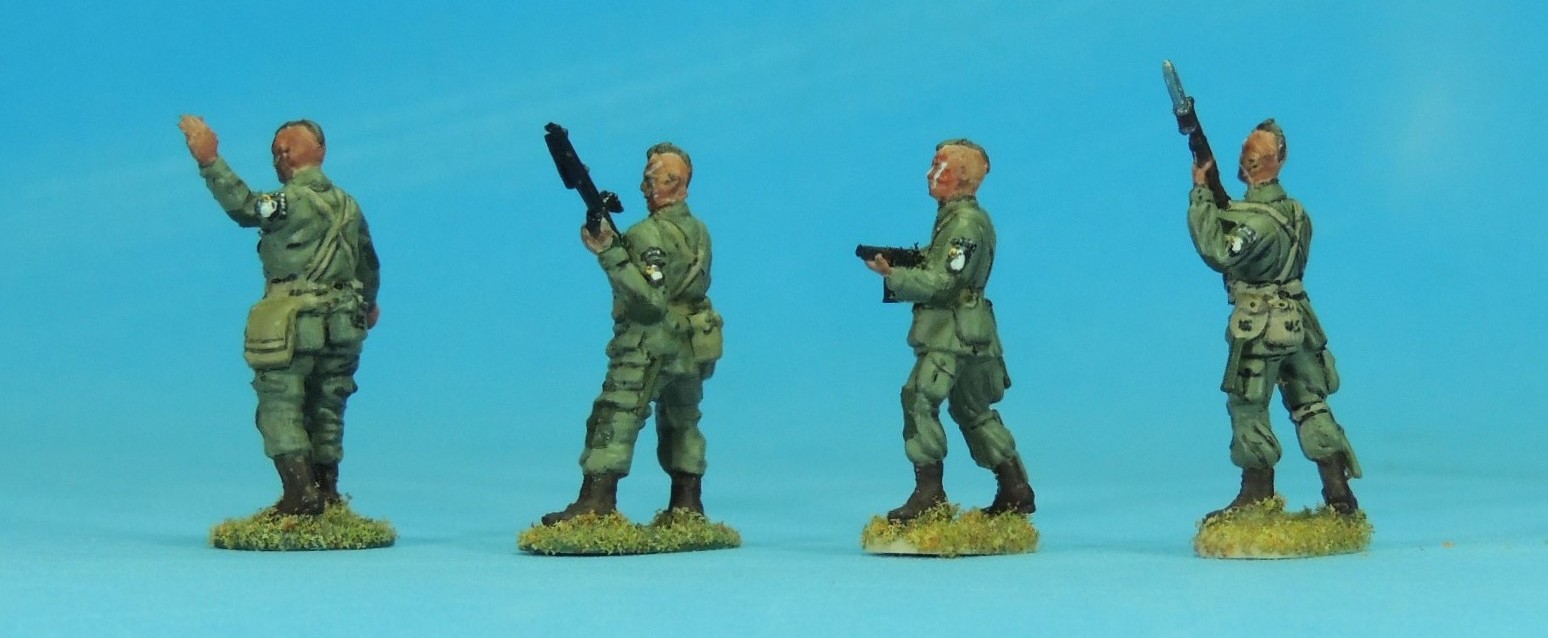 BELOW: The ESCI figure on the far right has the 10-inch M1 Bayonet attached to the folding stock M1A1 Carbine. The M1 Bayonet became standard in 1943, replacing the earlier 16-inch bayonet. Note the “U.S.” designation on the covers of the entrenching tool and canteen on the same ESCI figure.
BELOW: The ESCI figure on the far right has the 10-inch M1 Bayonet attached to the folding stock M1A1 Carbine. The M1 Bayonet became standard in 1943, replacing the earlier 16-inch bayonet. Note the “U.S.” designation on the covers of the entrenching tool and canteen on the same ESCI figure. 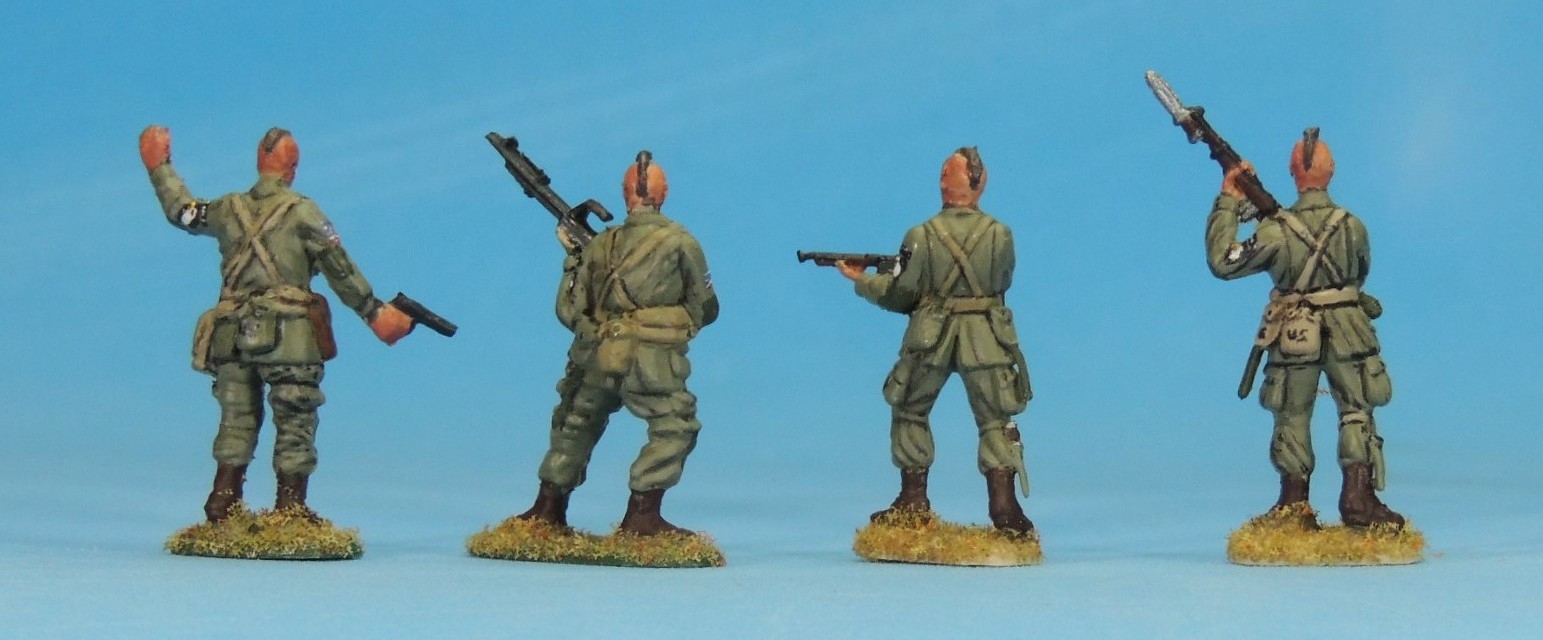 BELOW: Here are the second four figures. Note that the head on the Caesar figure on the far left is disproportionately large — a melonhead if I ever saw one. Although the Revell figure (second from left) appeared to lack facial detail, paint really brought it out. Note the 10-inch bayonet attached to the M1 Garand rifle on the Caesar figure on the far right.
BELOW: Here are the second four figures. Note that the head on the Caesar figure on the far left is disproportionately large — a melonhead if I ever saw one. Although the Revell figure (second from left) appeared to lack facial detail, paint really brought it out. Note the 10-inch bayonet attached to the M1 Garand rifle on the Caesar figure on the far right.
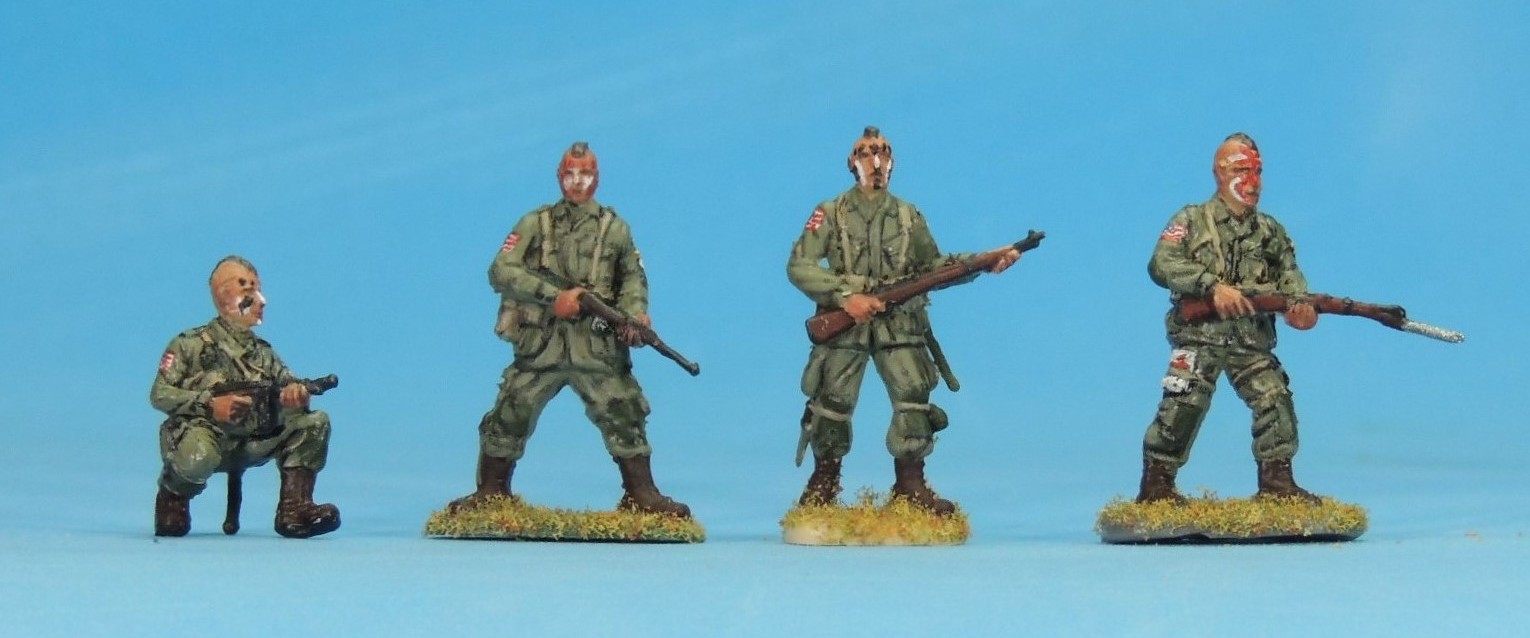
BELOW: Note that the first three figures — the three original Pathfinders with Mohawk haircuts — have the M3 trench knife attached to the lower right leg, making them honest paratroopers. Created by three different sculptors, note the difference in the heads. This variety in heads is realistic and the welcome result of mixing figures from different companies. Note the first aid pouch on the right leg of the walking Caesar figure (far right), who also sports one of the Caesar melonheads. These first aid kits typically contained field dressing and morphine.
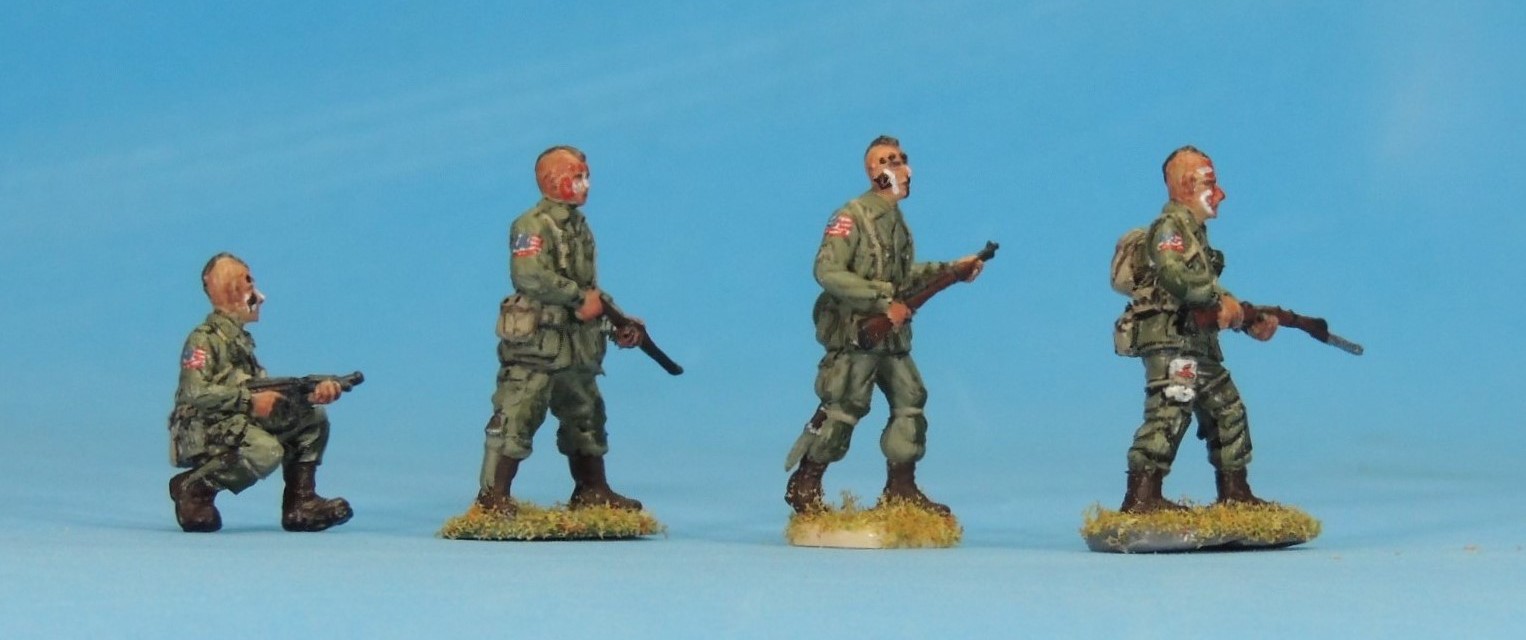 BELOW: ESCI’s attention to detail is evident in the inclusion of a helmet attached to the back of its Pathfinder figure (third from left). Neither the Caesar nor the Revell bareheaded Pathfinders with Mohawk haircuts (first and second from left) thought to include a helmet.
BELOW: ESCI’s attention to detail is evident in the inclusion of a helmet attached to the back of its Pathfinder figure (third from left). Neither the Caesar nor the Revell bareheaded Pathfinders with Mohawk haircuts (first and second from left) thought to include a helmet.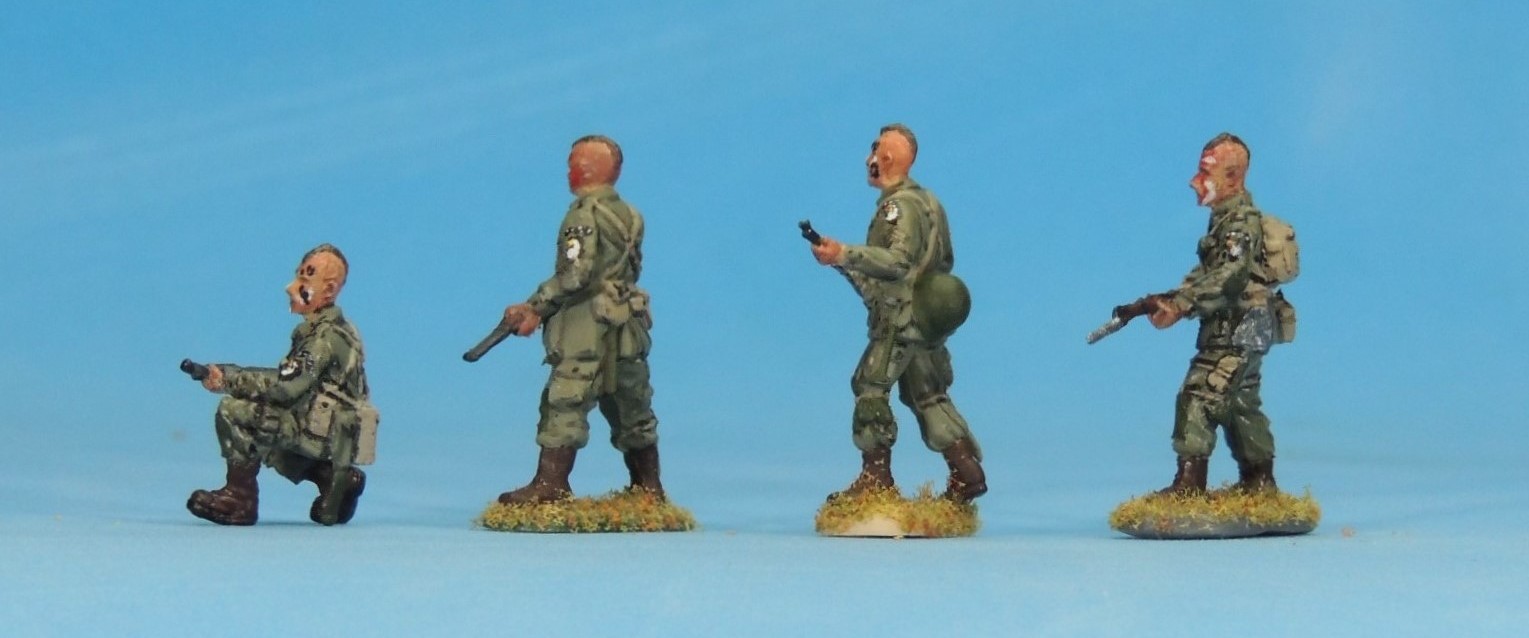 BELOW: Note the M1936 Musette Field bag on the back of the Caesar figure on the far right. Though usually associated with paratroopers, this lightweight canvas backpack was also available to officers in the regular infantry.
BELOW: Note the M1936 Musette Field bag on the back of the Caesar figure on the far right. Though usually associated with paratroopers, this lightweight canvas backpack was also available to officers in the regular infantry.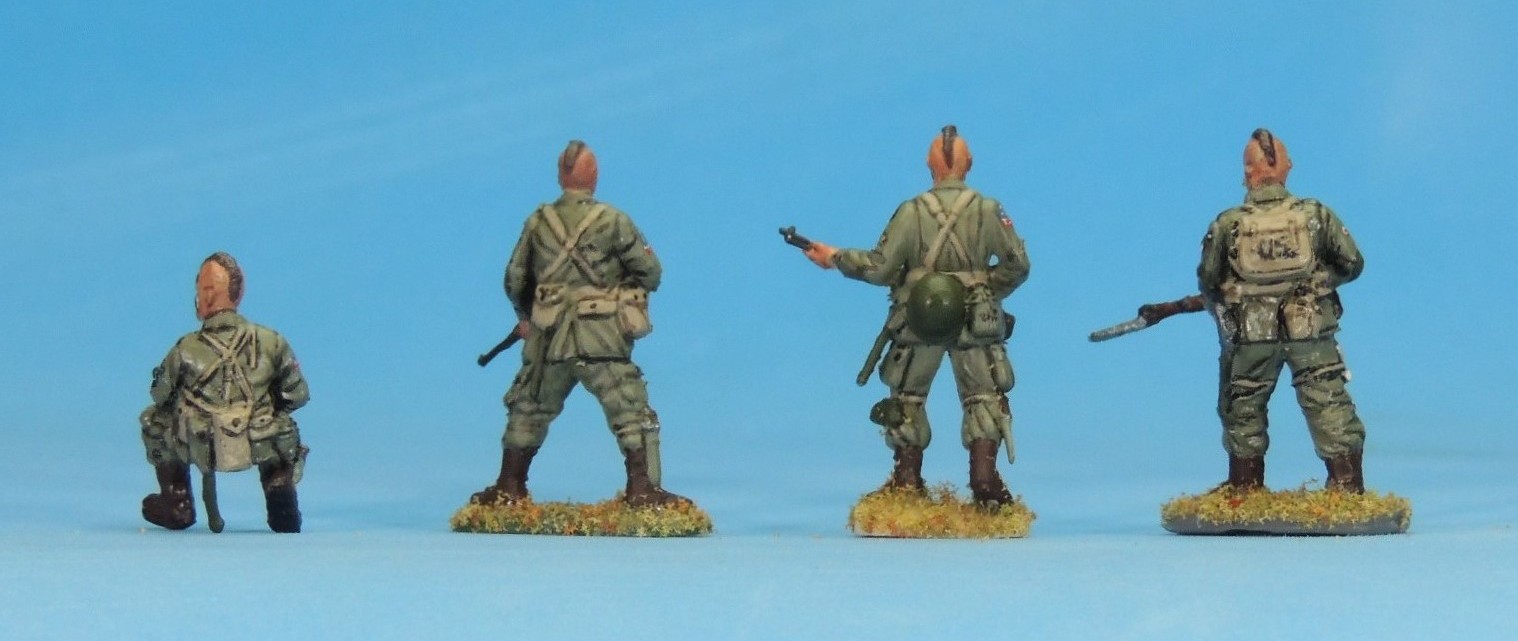 BELOW: Here are the last four figures. Note the Imex figure (second from left) is tall but slim, lending greater variety to the figures. Note the yellow gloves on the Italeri figure holding the M9 Bazooka (far right), recommended to protect the hands in case of back-flash when the rocket left the muzzle.
BELOW: Here are the last four figures. Note the Imex figure (second from left) is tall but slim, lending greater variety to the figures. Note the yellow gloves on the Italeri figure holding the M9 Bazooka (far right), recommended to protect the hands in case of back-flash when the rocket left the muzzle.

BELOW: Note that the Italeri bazooka gunner (far right) has the M3 trench knife on his lower right leg.
BELOW: I could not identify the bag on the left hip of the Caesar figure (far left). While it’s probably an M1936 Musette field bag, it’s missing the two straps and buckle to close the flap, as seen on the two Imex figures next to it.
BELOW: Of particular interest is the folded M1A1 Carbine on the back of the bazooka gunner (far right). This may be the only folding stock M1A1 Carbine that is actually folded in the various sets. On the same figure, note as well the superb rendition of the “U.S.” designation on his canteen. Note that both Imex figures in the middle have the M1936 Musette field bag. As with the ESCI sculptor who included the distinctive trench knife on virtually all his paratroopers, the Imex sculptor’s idiosyncrasy was to include the characteristic musette field bag on all but two of his 14 paratroopers.
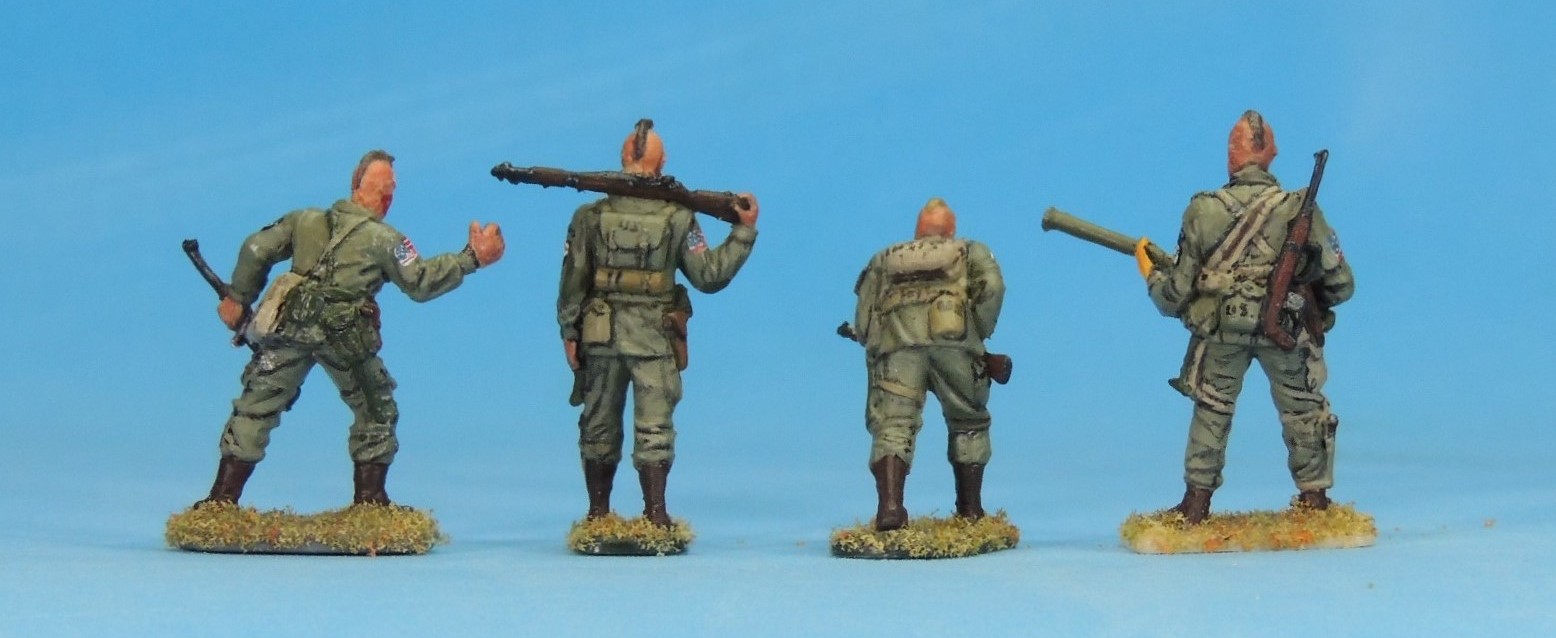 BELOW: Here are some photos of the TQD figure, completing the Filthy Thirteen. It bears mentioning again that TQD white metal figures are generally excellent, with realistic proportions, fine detail, and historical accuracy.
BELOW: Here are some photos of the TQD figure, completing the Filthy Thirteen. It bears mentioning again that TQD white metal figures are generally excellent, with realistic proportions, fine detail, and historical accuracy.
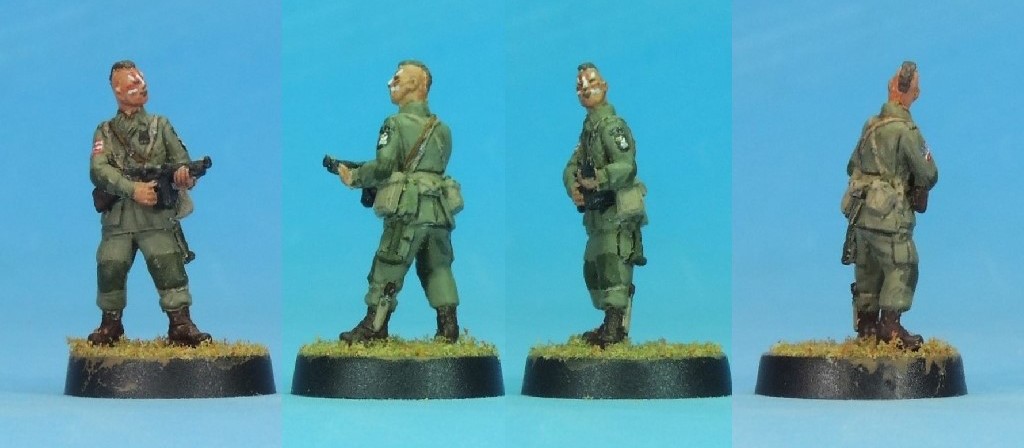
Comparison Chart
Finally, below is a lagniappe comparison chart that summarizes the project. It shows the original figures with helmets, the set they came from, the figures with the transplanted heads, and the finished figures, as well as the weapon each carries.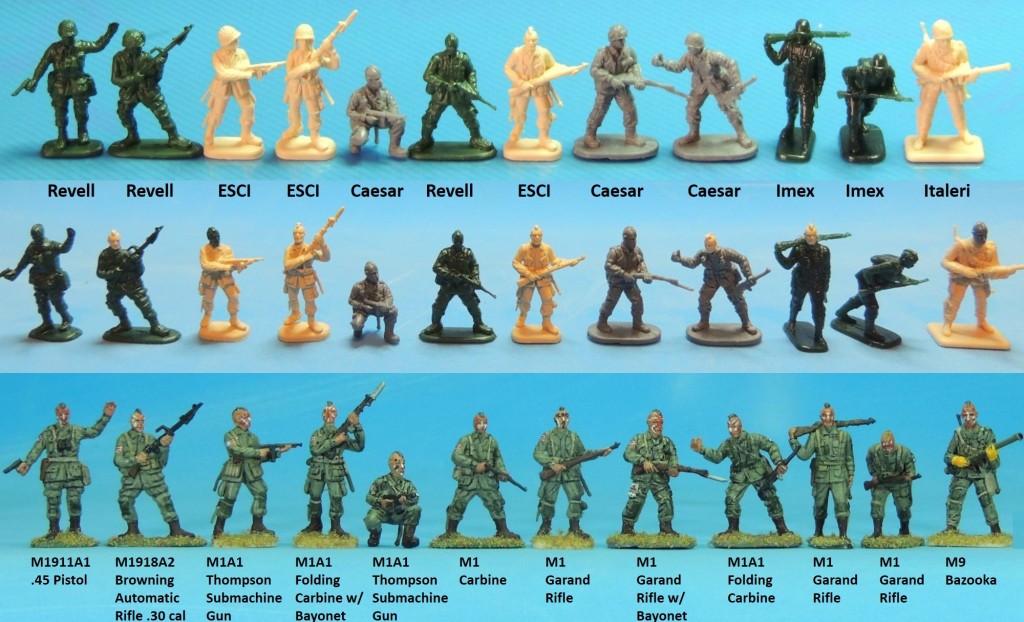
The Upshot
I was pleasantly surprised by the results of this project, an honest and well-intentioned 1/72 scale tribute to the Filthy Thirteen, “the orneriest, meanest group of paratroopers” who ever lived. And it was loads of fun to boot. However, I do have two regrets, as discussed previously: 1) I wish I’d used an Airfix figure to represent all available U.S. paratrooper sets; and 2) I wish I’d used a figure with an M3 “grease gun” to better represent most of the small arms used by U.S. paratroopers.
I hope you enjoyed this Filthy Thirteen series of posts. If something looks amiss, please remember that I’m just an amateur enthusiast (redundancy intended) and let me know. I would be delighted — truly — to correct inaccurate information so that this may be useful for other 1/72 scale collectors and wargamers. Stay tuned next week or so for Part 5: Preboarding Diorama, a simple diorama featuring these characters. As always, comments, questions, corrections, and observations are welcome.
—————————————————————————————————————————-
I want to thank my friend and fellow collector Joe Buccellato, of NY, whose love of craft, workmanship, and patience far exceed mine — “therapy,” he calls it. He enthusiastically painted these figures and to the extent they succeed the credit is all his. I’m fortunate he’s a Civil War collector for I doubt he’d part with my WWII figures after he paints them. More of his outstanding work will be featured in future posts.

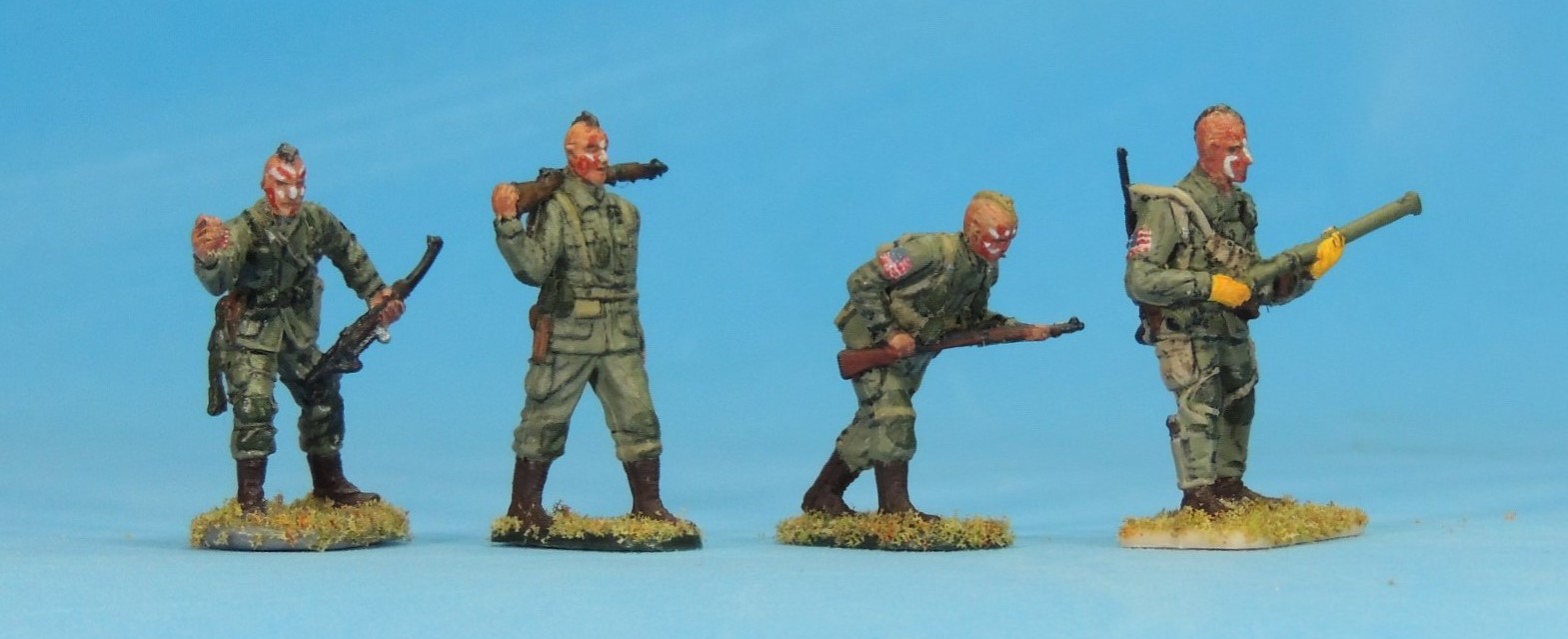


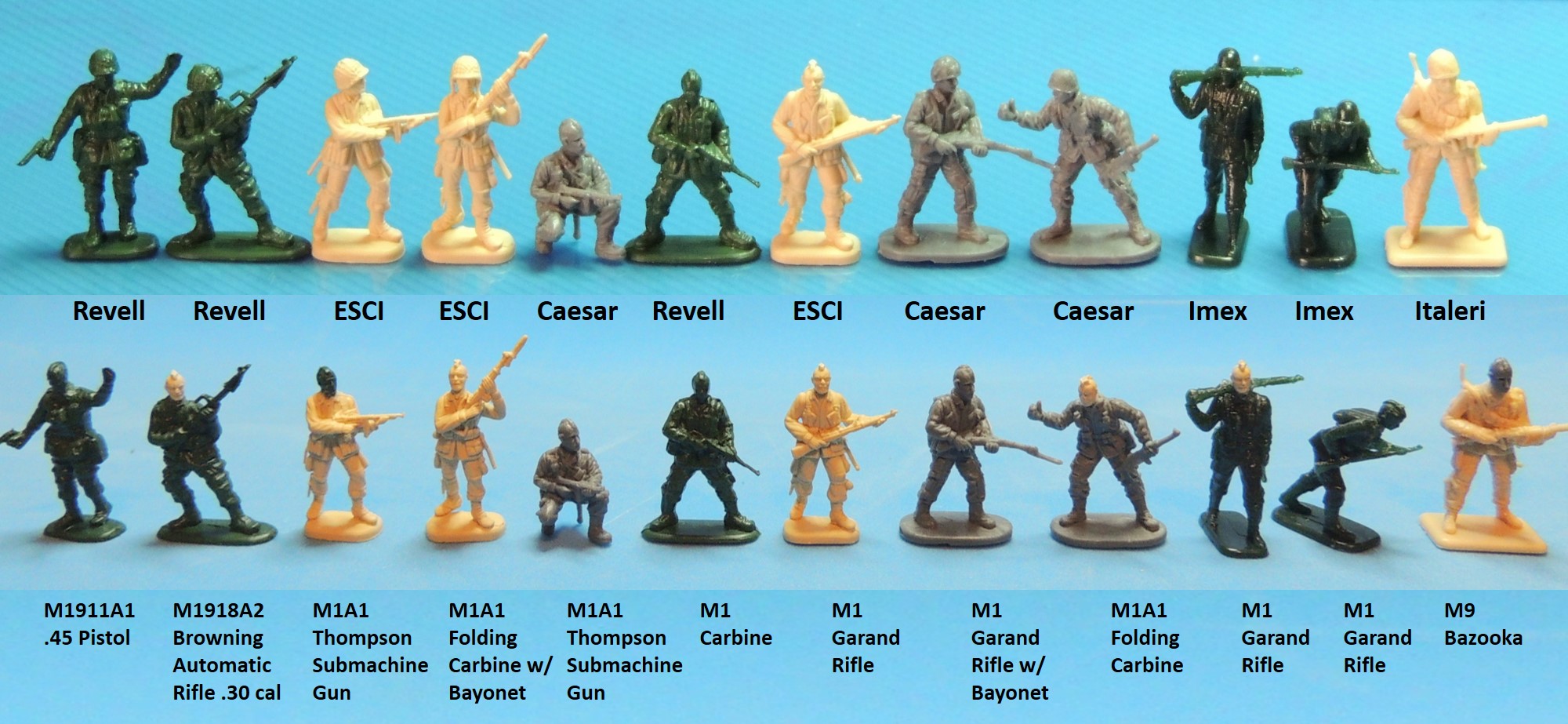
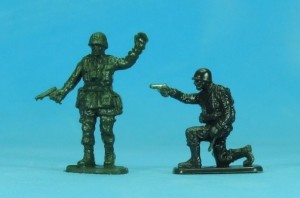
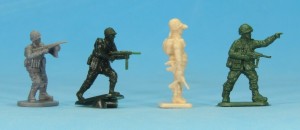
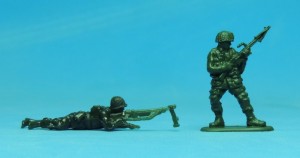
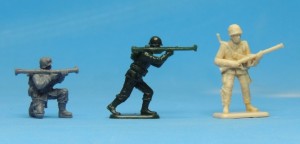

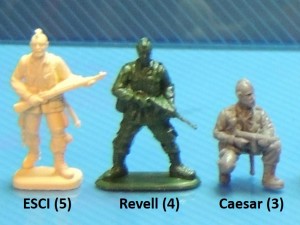 only exception, lacking sharpness in detail, though still not a bad effort. The ESCI, Revell, and Caesar sets each include one Pathfinder pose, fortunately with 5, 4, and 3 samples in each set, respectively. See photo inset at left. Thus, we have a total of 12 figures: three different ready-made figures and nine extra copies of those figures. To create 12 different figures with Mohawk haircuts, we take the heads of the nine extra copies and transplant them on the torsos of U.S. Airborne figures from the different sets.
only exception, lacking sharpness in detail, though still not a bad effort. The ESCI, Revell, and Caesar sets each include one Pathfinder pose, fortunately with 5, 4, and 3 samples in each set, respectively. See photo inset at left. Thus, we have a total of 12 figures: three different ready-made figures and nine extra copies of those figures. To create 12 different figures with Mohawk haircuts, we take the heads of the nine extra copies and transplant them on the torsos of U.S. Airborne figures from the different sets. 
